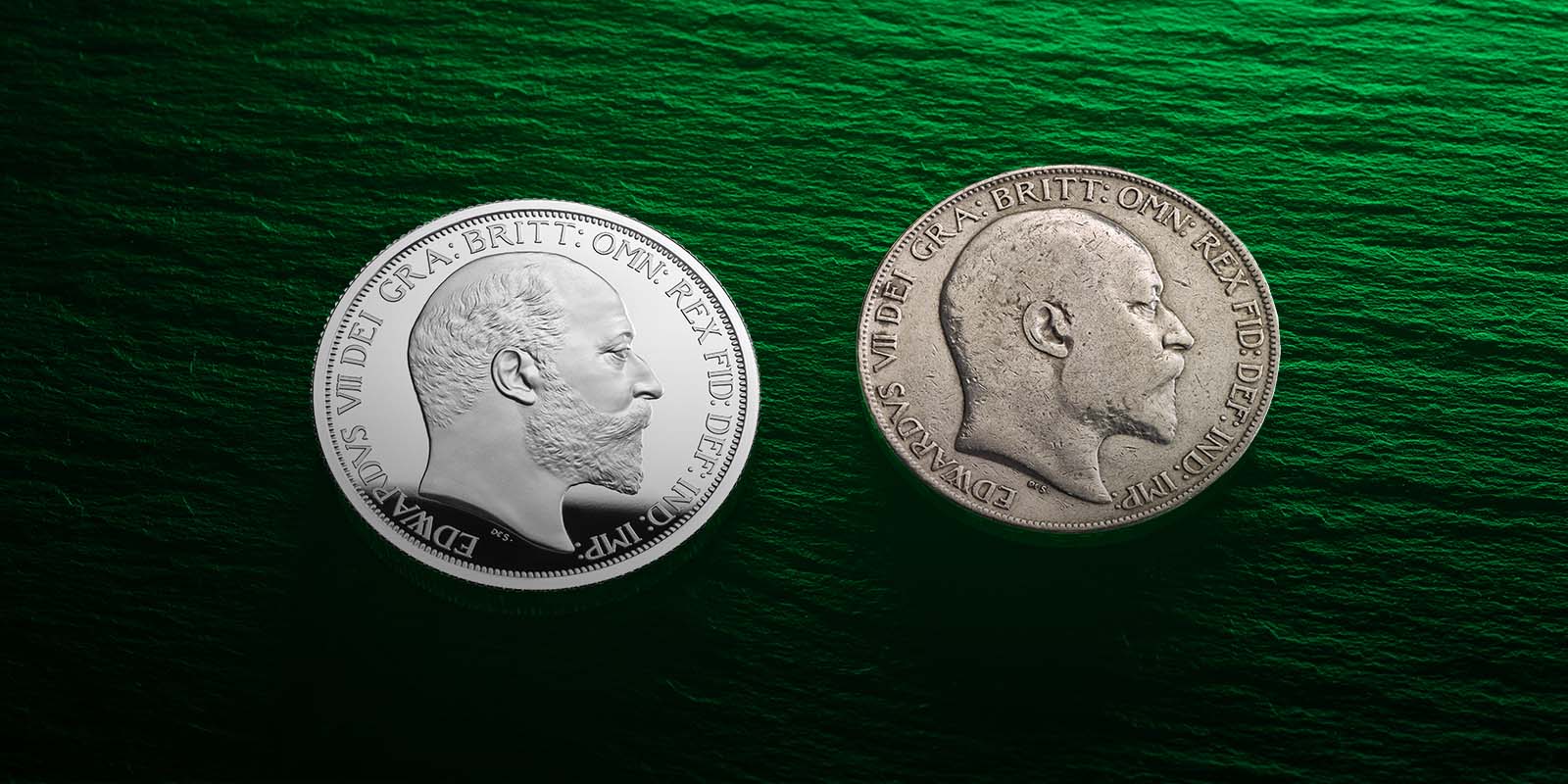Our popular British Monarchs Collection continues its exploration of royal portraiture on coins throughout history with Edward VII. The well-travelled and popular king ruled at a time when the traditions and ideas of the past began to make way for a more modern age, a story exemplified by the coins of his reign.
By the time Edward VII inherited the throne in 1901, the United Kingdom’s presence across the globe was so great that approximately a quarter of the world was under British influence. Trading between countries had given rise to the popularity of The Sovereign, also known as the ‘chief coin of the world’. Well maintained by The Royal Mint, with any ‘light’ coins removed from circulation, the gold coin was internationally trusted and considered the height of accuracy.
With increased use of The Sovereign overseas, it made more sense to strike coins close to sources of gold bullion than it did to ship the raw material for striking all the way to London from the other side of the world and back. In the nineteenth century, The Royal Mint opened its first branch mint in Australia.
Initially, the designs of the coins struck in Australia were completely different to those struck at Tower Hill. By 1871, the branch mint in Sydney, and then later in Melbourne, could choose to use the same St George and the dragon design that featured on The Sovereigns struck in London, but they were also able to continue using the shield design. All die work was prepared in London, protecting the quality of the coins and their designs, and every Sovereign included a small mint mark, often the initials of a city or country, to identify its place of origin.
The Australian branches retained the use of the heraldic shield and employed both designs until 1887, at which point The Sovereigns from branch mints and those struck in London all featured Pistrucci’s St George and the dragon design. Six branch mints were opened in total, with the Canadian branch opening during Edward VII’s reign, followed by those in India and South Africa.
Meanwhile in the United Kingdom, Edwardian minting processes were advancing. The use of large-scale models invited the hand of the sculptor, rather than the engraver, to create stylised naturalistic portraits with personality. At a time when photography was on the rise, it was more important than ever that a coinage portrait captured a faithful likeness of the subject.
The portrait of Edward VII, which our team has remastered for The British Monarchs Collection, was originally created by the engraver George William De Saulles, and this ‘bare head’ portrait defined Edward VII’s nine-year reign. The name ‘bare head’ comes from the absence of a crown or laurel wreath in the portrait, which appeared in coinage portraits of previous British monarchs; De Saulles also created an alternative crowned portrait of Edward VII that appeared on some overseas coinage. With a flair for portraiture, De Saulles pushed the possibilities of creating a good likeness of the subject in his coin designs. For the new coinage portrait of Edward VII, the king granted De Saulles just two sittings before keeping the trial piece sent to him for approval.
Combining age-old craftsmanship with modern minting techniques, our Product Design team has meticulously recreated this classic portrait for the fourth coin in The British Monarchs Collection. For more information about Edward VII and his coins, visit the British Monarchs section of our website.


